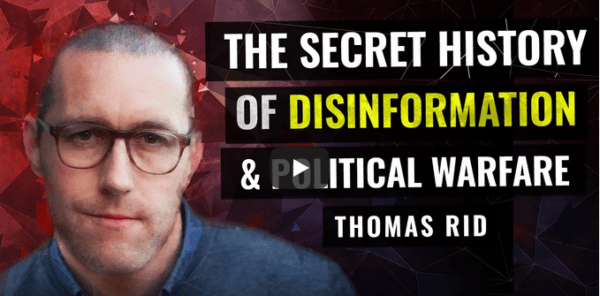Disinformation and Political Warfare
By Armando Chaguaceda

HAVANA TIMES – The Spanish edition of political expert Thomas Rid’s [1] latest book has just been published, which focuses on the political use of disinformation.
During times when cheap and hysteric opinions multiply about the social impact of fake news, this book offers a robust historic and conceptual reconstruction of the link between active measures and political warfare. Two notions arise in intelligence agencies in Moscow and Washington, during the Cold War.
The author tells us that active measures are not spontaneous political tricks, but a product of intelligence agencies. Professionally run, systematically tweaked and meticulously targeting foreign enemies.
They combine fabricated lies and manipulated truths, public actions – political campaigns – and undercover operations – periodic pressure, which is personalized a lot of the time – to weaken the enemy. They cause conflict among allied nations, stir up ethnic conflicts, poison electoral campaigns and break up political movements. In a broader sense, they wear down people’s and society’s confidence in their values and institutions – especially in democracies.
While disinformation began as a strategy a century ago in Russia, it kicked off big time in 1945 – with the West taking early advantage – until the 1970s, when the KGB and its allies turned it into an operative science, with bureaucracies, budgets and global reach.
The fourth wave of disinformation is currently underway and broke out in 2010, with new technologies, identities and the Internet. Wikileaks, the 2016 US election and the diplomacy of vaccines during this current pandemic have been iconic platforms for disinformation to flourish.
Used to democratic transparency, open societies combine access to information, critique of their own problems and naive ignorance of reality and foreign threats.
We know the actions, successes and crimes of agencies such as the CIA. However, the form and scope of disinformation operations of regimes born from the Soviet womb, have generally been ignored.
Rid offers valuable conceptual, historic and technological clues in his book. He explains that disinformation campaigns attack the epistemic order and liberal politics, based on the free discussion of ideas and construction of consensus. Induced confusion, insults and polarization eat away at this order.
The book shows how the early equivalent of active measures, in scope and hostility, in the East and West, were overcome in benefit of the latter during the final strait of the Cold War. It also reveals how the digital revolution made active measures a lot cheaper, quicker, reactive and replicable.
New forms of activism – combining transparency, hacking and leaking – and undercover actions, are becoming more omnipresent active measures. They have become harder to counteract for its victims. They have also become harder to control, contain and assess for those attacking.
Both open and closed societies are suffering heightened identity crises – to different extents – because of our new virtual reality today. However, we underestimate the threat of disinformation campaigns in our slow democratic complacency, helping them to spread their potential disruption.
Democracy’s commitment to the truth is not only a conscious attitude, it’s an existential matter. Putting objectivity based on analysis and a plural debate of proof before the influx of active measures, keeps open societies alive and breathing. Democracies in the 21st century should not ignore lessons learned from the Cold War’s disinformation campaigns, which have been reformulated by their autocratic enemies in today’s digital era.






“While disinformation began as a strategy a century ago in Russia, it kicked off big time in 1945”
I would agree.
Forget the disinformation poster below. You criticized Russia the Cuban dictatorship ally.
Disinformation began a century ago in Russia?
Really?
So there was no disinformation prior to a century ago?
To suggest that there was no disinformation prior to a century ago…….
is……..
……….a blatant example of disinformation.